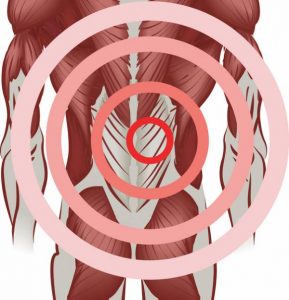Core Injuries Riddling Baseball
 By: Danny Olszowy, CSCS
By: Danny Olszowy, CSCSThe Master’s Academy Strength & Conditioning Coach
Sports Performance Specialist
SPECTRUM, Inc
 Core-related injuries in baseball have been at an all-time high since 2011. According to Stan Conte, the long-time Los Angeles Dodgers’ Head Trainer, from 1991-2010 there were only an average of just fewer than 20 core-related injuries per year. The highest total in that 20-year span was 29. However, from 2011 -2015 there were 50, 45, 41, and 35, respectively. According to the same research, 92% of core injuries occurred at the obliques (internal/external and intercostals) with the other 8% at the rectus abdominis. Naturally, we have asked ourselves why? What is different from 2011 on than any of the past years, even decades?
Core-related injuries in baseball have been at an all-time high since 2011. According to Stan Conte, the long-time Los Angeles Dodgers’ Head Trainer, from 1991-2010 there were only an average of just fewer than 20 core-related injuries per year. The highest total in that 20-year span was 29. However, from 2011 -2015 there were 50, 45, 41, and 35, respectively. According to the same research, 92% of core injuries occurred at the obliques (internal/external and intercostals) with the other 8% at the rectus abdominis. Naturally, we have asked ourselves why? What is different from 2011 on than any of the past years, even decades?
The truth is, the answer is quite elusive. The Athletic Trainers and Strength Coaches are more equipped with knowledge of how to train properly and get their players bigger, stronger, and more explosive than ever before, yet we continue to have core injuries at a high rate. As you could imagine professionals in this field have scratched their heads over this issue and researched for years to try to get to the bottom of this trend, but we just do not know yet. Some of the theories are that baseball players spend so much time hitting and/or throwing throughout the year (upwards to 9 months) that their core musculature just breaks down and leads to a strain; others consider the explosiveness in which players swing and throw and all the torque they are creating in those acute moments is just too much for their core musculature despite the high level of core training. However, ultimately we have not figured out exactly what is creating so many core injuries, but we do know that we cannot pinpoint one specific reason.
With all of the information about developing core strength out there we know that the core is not being abandoned or neglected. I would argue that the core is being trained more today than ever before in baseball. I believe each of those aforementioned theories hold truth and have played a role in these injuries, but since we cannot isolate one particular reason we have to move forward trying to address strengthening every aspect of the core, as I know the MLB training staffs are doing. That is exactly what we do with the baseball players that come into our facility at Spectrum, Inc. This philosophy of developing the intra-abdominal muscles (muscles supporting spine), obliques, intercostals, and rectus abdominis holistically is what we believe in and therefore implement into our athletes training programs. We have to train the core in every type of movement possible to prepare it for such situations in sport (aka Swinging/Throwing). Having a rock solid, stable, yet mobile core provides players with a foundation in which their sport-skill can be built upon. This will harness more power potential and torque created in a swing or pitch to directly impact throwing velocity and swing velocity. In my humble opinion, a strong core single-handedly gives young players an advantage over other young players assuming all skills are similar.
Despite not being able to get to the bottom of this trend, we do know that we are training the core in the best ways possible and will continue to do so. We are strengthening the core at a high level, preparing it for as many scenarios as possible through planes of motion, but sometimes injuries just happen. The important thing is to be proactive in addressing core strength at a younger age (developmental age ranging from 8-21) so that your son lowers the risk of a core-related injury drastically. Baseball is a game with so many uncontrollable situations, but having a strong core is one of the components of baseball that can be controlled, so why not take advantage of it by doing so?
Leave a Reply